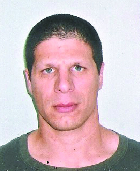גיא רון 2007-2008

- מוסד לימודים לדוקטורט:
- אוניברסיטת תל-אביב
- תחום אקדמי:
- פיסיקה גרעינית
- מנחה/מנחים בדוקטורט:
- פרופ' אלי פיאסצקי
- נושא הדוקטורט:
- Proton Form Factor at Low Momentum Transfer
- שנת קבלת הדוקטורט:
- 2009
- מוסד בתר-דוקטורט:
- אוניברסיטת קליפורניה בברקלי
- מוסד נוכחי:
- האוניברסיטה העברית בירושלים
- משרה אקדמית נוכחית:
- מרצה בכיר
- כתובת דוא"ל:
- gron@phys.huji.ac.il
- טלפון:
- +972-2-6585200
- קורות חיים
- פרסומים
- עמוד הבית
Guy Ron is a nuclear physicist and senior lecturer at the Hebrew University of Jerusalem. Guy heads a research group that studies two of the fundamental forces of nature, the ElectroWeak force, and the Strong Nuclear Force, this is done by conducting experiments on systems which are affected by these forces. The group is trying to answer question such as: Is there physics beyond the Standard Model? How does one see the effects of such possible physics on low energy processes like nuclear beta decay? How well do we know the structure of the proton and neutron? Are the charge and magnetization distributions in them different from each other? Is a nucleon inside a nucleus still a nucleon? Do it’s properties change in a measurable way? Can we produce the smallest QED atom, composed of two muons (known as “true muonium”, a μ+μ– state) in a particle accelerator and measure some of it’s properties?
Guy’s PhD thesis “Proton Form Factor at Low Momentum Transfer” was written under the supervision of Prof. Eli Piasetzky. In his PhD Guy completed his analysis of proton electromagnetic form factors in only three months, with excellent results: the first definitive finding that the electric and magnetic structures of the proton differ significantly when probed at low-momentum transfer. This is very suggestive of a behavior in the ratio of electric to magnetic structure unanticipated by any of the existing theories or descriptions of the proton electromagnetic structure.
Guy is a Member of the Israeli National Nuclear Physics Committee and a grant reviewer for the Israeli Science Foundation. He is the recipient of the Golda Meir Fellowship from the Hebrew University, the Rothschild Postdoctoral Fellowship and the Jefferson Science Association (JLab/JSA) Best Graduate Thesis Prize.
